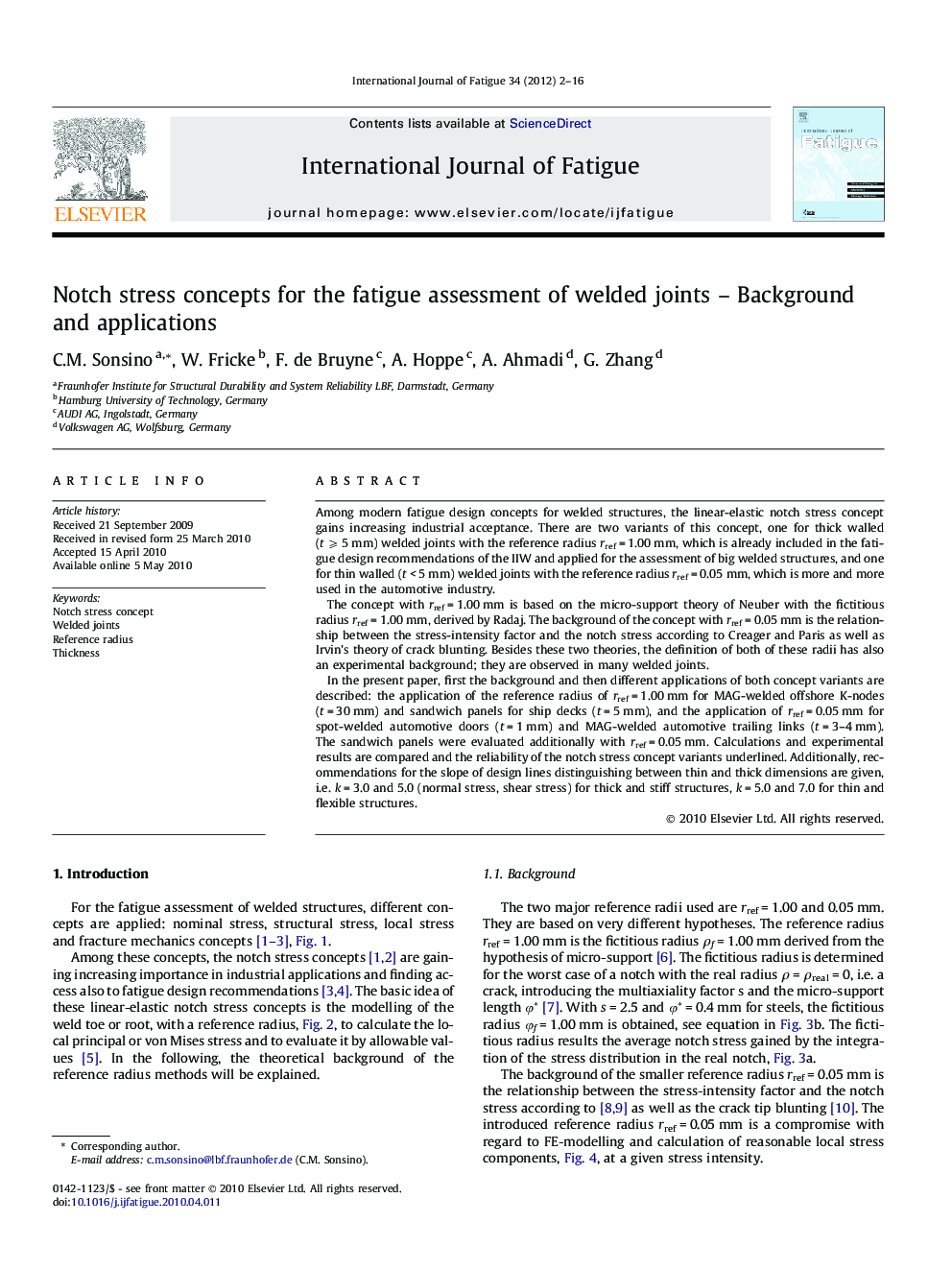| کد مقاله | کد نشریه | سال انتشار | مقاله انگلیسی | نسخه تمام متن |
|---|---|---|---|---|
| 775377 | 1463798 | 2012 | 15 صفحه PDF | دانلود رایگان |

Among modern fatigue design concepts for welded structures, the linear-elastic notch stress concept gains increasing industrial acceptance. There are two variants of this concept, one for thick walled (t ⩾ 5 mm) welded joints with the reference radius rref = 1.00 mm, which is already included in the fatigue design recommendations of the IIW and applied for the assessment of big welded structures, and one for thin walled (t < 5 mm) welded joints with the reference radius rref = 0.05 mm, which is more and more used in the automotive industry.The concept with rref = 1.00 mm is based on the micro-support theory of Neuber with the fictitious radius rref = 1.00 mm, derived by Radaj. The background of the concept with rref = 0.05 mm is the relationship between the stress-intensity factor and the notch stress according to Creager and Paris as well as Irvin’s theory of crack blunting. Besides these two theories, the definition of both of these radii has also an experimental background; they are observed in many welded joints.In the present paper, first the background and then different applications of both concept variants are described: the application of the reference radius of rref = 1.00 mm for MAG-welded offshore K-nodes (t = 30 mm) and sandwich panels for ship decks (t = 5 mm), and the application of rref = 0.05 mm for spot-welded automotive doors (t = 1 mm) and MAG-welded automotive trailing links (t = 3–4 mm). The sandwich panels were evaluated additionally with rref = 0.05 mm. Calculations and experimental results are compared and the reliability of the notch stress concept variants underlined. Additionally, recommendations for the slope of design lines distinguishing between thin and thick dimensions are given, i.e. k = 3.0 and 5.0 (normal stress, shear stress) for thick and stiff structures, k = 5.0 and 7.0 for thin and flexible structures.
Journal: International Journal of Fatigue - Volume 34, Issue 1, January 2012, Pages 2–16